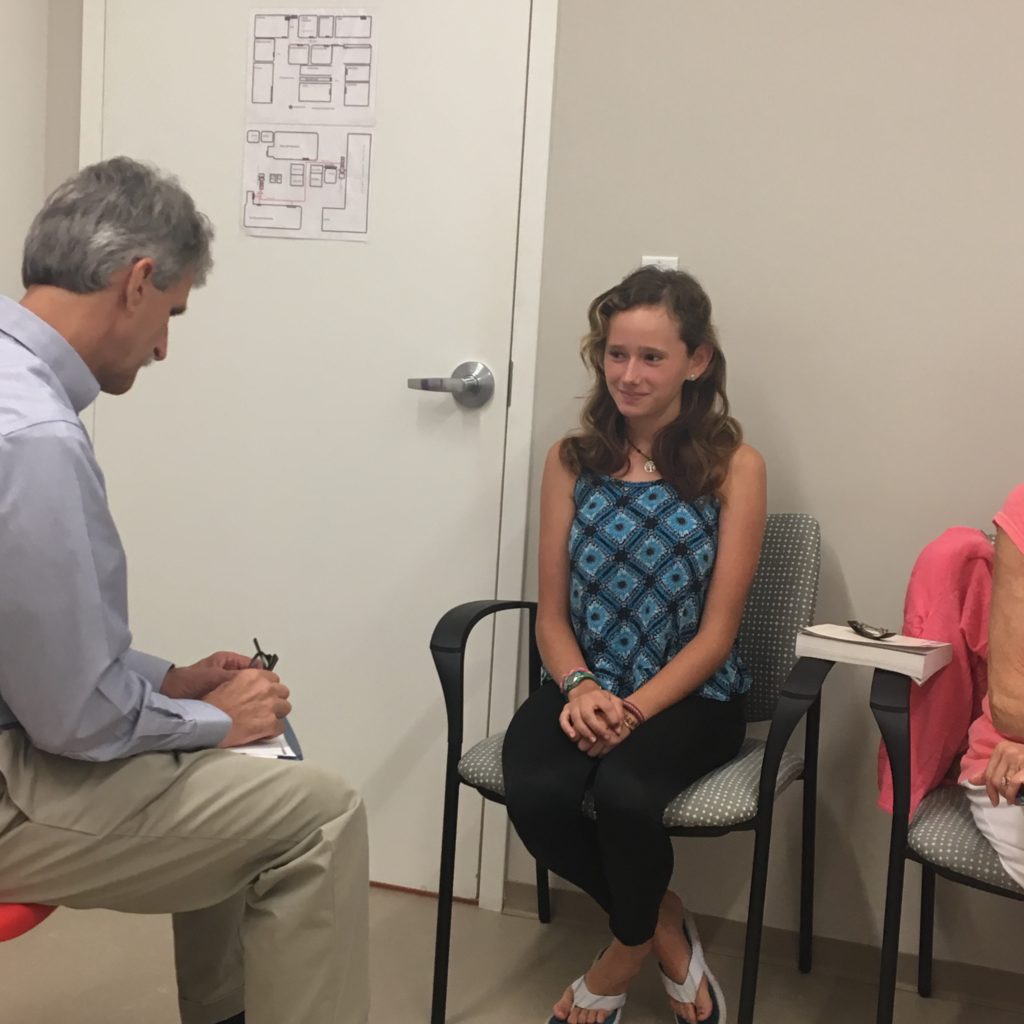A diagnosis of scoliosis can be frightening and confusing for both a child and a parent. Even figuring out how to pronounce the word “scoliosis” itself can be overwhelming! To ensure that you feel comfortable and confident when determining a course of treatment for your child, it is important to not only find credible resources and information, but to assemble a scoliosis team of experts who will collaborate with each other and work with you and your child. A focus on these goals will help assuage anxiety, giving you and your child a sense of ownership over the process, and will result in success for the duration of treatment.
- Get Educated: Understandably, one of the first reactions for many parents when they are presented with a diagnosis, especially an unfamiliar one that involves their child, is to turn to the internet. While arming yourself with information on the specifics of your child’s curvature and treatment options will go a long way in diminishing initial fears; beware, it could also backfire. Unfortunately, the enormous number of articles available on the internet can become overwhelming. Just as disconcerting, there is as much misinformation to be found while surfing the web as there is accurate information. It is imperative to have a team of professionals who can help you navigate through the process and information, making the big decisions easier.
- Gather a Competent Team of Scoliosis Experts: Most parents—with just cause—are intent on avoiding surgery for their child’s curvature if at all possible, as spinal surgeries can pose risks that do not exist with non-operative bracing and physical therapy. Assembling a team of experts who are committed to providing non-operative scoliosis specific care and having access to those professionals throughout the treatment reduces anxiety for families. Scoliosis teams include: family physicians, orthopedic surgeons, physical therapists, orthotists, and radiologists. Effective teams will collaborate, are competent and understand that each patient is unique and requires an individualized treatment plan.
- Support: A supportive and encouraging relationship between: the patient and the physician, the patient and the orthotist, the patient and their parents or guardians, and the patient and their peers, is crucial to a successful outcome. This approach helps to create an environment in which the patient can feel a vital part of the team, thus allowing her or him to feel increasingly at ease as she or he proceeds through the treatment plan.Ideally, patients would be involved in the process of making their brace to best fit them and encouraged to ask for adjustments when necessary. Open communication is crucial to the orthotist’s ability to give the patient the most comfortable fit for bracing so that optimal wear time is easy to meet.Counseling services and support groups are prevalent and can be a hugely important component of the overall treatment plan. Groups like Scolios-us and Curvy Girls can help address some of the specific worries that young people diagnosed with scoliosis might face. The resources, tools, and community provided by these organizations can be enormously helpful to both patients and their parents.
Of course, in the face of any medical diagnosis, fear and anxiety will rear their ugly heads. Tamping down those concerns quickly should be of the utmost importance to your child’s team. With access to reliable research and accurate medical information, the assembly of an expert team of varied and collaborative professionals who each specialize in scoliosis, and a focused effort to include the patient in every step of their treatment protocol these fears can be eased. At the end of treatment, the hope is that a patient and his or her family can look back with confidence and assurance knowing that they trusted a competent and caring team to walk alongside them on their journey to success.
